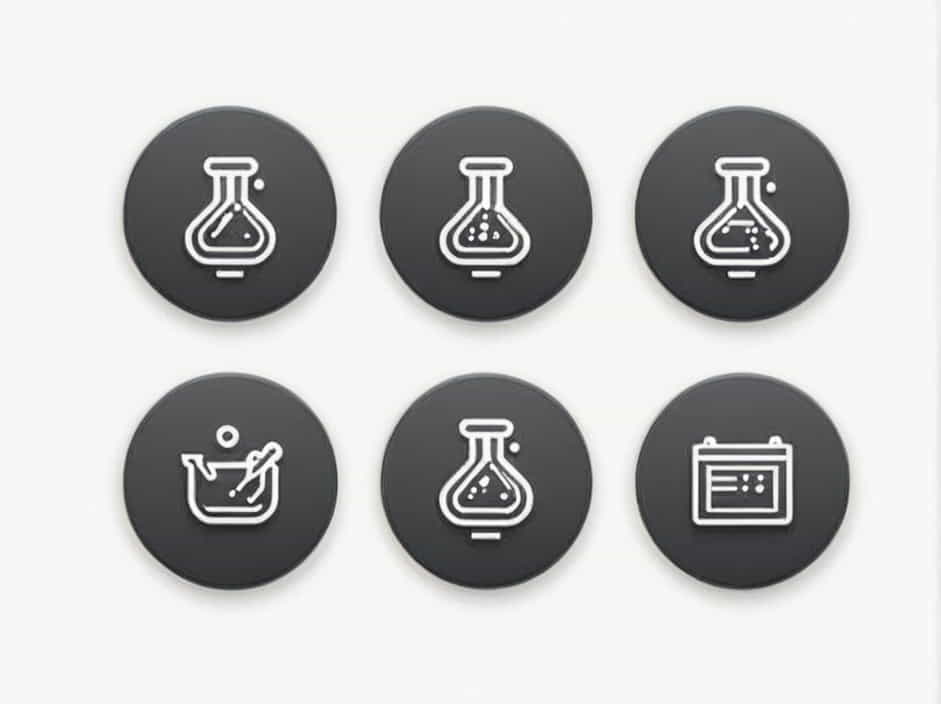Qualitative analysis is an essential part of OCR A Level Chemistry, helping students identify unknown substances using chemical tests. Unlike quantitative analysis, which focuses on numerical data, qualitative analysis is concerned with detecting the presence of specific ions, gases, and functional groups.
Mastering qualitative analysis is crucial for practical assessments, theoretical exams, and real-world applications in forensic science, environmental testing, and pharmaceuticals. This guide covers key qualitative tests, observations, and explanations, making complex chemistry concepts easy to understand.
What is Qualitative Analysis?
Definition and Importance
Qualitative analysis in chemistry refers to techniques used to identify elements, compounds, or ions in a given sample. These methods rely on color changes, precipitate formation, gas evolution, and flame tests rather than numerical measurements.
Why is qualitative analysis important?
- Used in forensic investigations to detect substances in crime scenes.
- Essential in medical diagnostics, such as blood tests.
- Applied in environmental science to test for pollutants.
- Helps chemists and students understand chemical reactions in real life.
Key Techniques in Qualitative Analysis
The most common qualitative analysis methods include:
- Flame Tests – Identifying metal ions by flame color.
- Precipitation Reactions – Detecting anions and cations through precipitate formation.
- Gas Tests – Confirming the presence of gases like oxygen, carbon dioxide, and hydrogen.
- Chemical Tests for Functional Groups – Identifying organic compounds.
Each of these methods plays a vital role in OCR A Level Chemistry practicals and exams.
Flame Tests for Metal Ions
How Do Flame Tests Work?
Flame tests help identify metal cations based on the color they produce when placed in a Bunsen burner flame. The heat excites the electrons in the metal ion, causing them to emit specific wavelengths of light.
Flame Test Colors for Common Metal Ions
| Metal Ion | Flame Color |
|---|---|
| Lithium (Li⁺) | Crimson red |
| Sodium (Na⁺) | Yellow |
| Potassium (K⁺) | Lilac |
| Calcium (Ca²⁺) | Orange-red |
| Copper (Cu²⁺) | Blue-green |
How to perform a flame test:
- Clean a nichrome wire loop in hydrochloric acid.
- Dip the wire in the test sample.
- Place it in the blue flame of a Bunsen burner.
- Observe and record the flame color.
Testing for Cations (Metal Ions) Using Sodium Hydroxide
Formation of Precipitates
Adding sodium hydroxide (NaOH) to metal ion solutions forms colored precipitates, helping identify cations.
| Metal Ion | Precipitate Color | Additional Information |
|---|---|---|
| Copper (Cu²⁺) | Blue | Does not dissolve in excess NaOH |
| Iron (Fe²⁺) | Green | Turns brown on standing (oxidation) |
| Iron (Fe³⁺) | Brown | Insoluble in excess NaOH |
| Aluminium (Al³⁺) | White | Dissolves in excess NaOH |
| Calcium (Ca²⁺) | White | Insoluble in excess NaOH |
Distinguishing Aluminium and Calcium Ions
Both Al³⁺ and Ca²⁺ form white precipitates with NaOH. However, aluminium hydroxide dissolves in excess NaOH, while calcium hydroxide does not.
Testing for Anions (Negative Ions)
Test for Carbonate Ions (CO₃²⁻)
Reagent Used: Dilute hydrochloric acid (HCl)
Observation: Effervescence (bubbles) due to carbon dioxide gas release.
Confirmatory Test: Pass the gas through limewater (Ca(OH)₂)-it turns cloudy if CO₂ is present.
Test for Sulfate Ions (SO₄²⁻)
Reagent Used: Barium chloride (BaCl₂) solution in the presence of dilute HCl.
Observation: A white precipitate of barium sulfate (BaSO₄) forms.
Test for Halide Ions (Cl⁻, Br⁻, I⁻)
Reagent Used: Silver nitrate (AgNO₃) in the presence of dilute nitric acid (HNO₃).
Observations:
| Halide Ion | Precipitate Color |
|---|---|
| Chloride (Cl⁻) | White |
| Bromide (Br⁻) | Cream |
| Iodide (I⁻) | Yellow |
Confirmatory Test:
- Add ammonia solution to distinguish halides:
- AgCl dissolves in dilute NH₃.
- AgBr dissolves in concentrated NH₃.
- AgI does not dissolve.
Gas Tests in Qualitative Analysis
Test for Oxygen (O₂)
Method: Insert a glowing splint into the gas.
Result: If oxygen is present, the splint relights.
Test for Hydrogen (H₂)
Method: Bring a burning splint near the gas.
Result: A ‘pop’ sound confirms the presence of hydrogen.
Test for Carbon Dioxide (CO₂)
Method: Bubble the gas through limewater.
Result: Limewater turns cloudy, indicating CO₂.
Test for Ammonia (NH₃)
Method: Hold damp red litmus paper near the gas.
Result: If ammonia is present, the paper turns blue.
Testing for Organic Functional Groups
Test for Alkenes (C=C Double Bonds)
Reagent Used: Bromine water (Br₂(aq))
Observation: Orange to colorless indicates the presence of an alkene.
Test for Alcohols (-OH Group)
Reagent Used: Acidified potassium dichromate (K₂Cr₂O₇/H₂SO₄)
Observation:
- Primary & secondary alcohols turn the solution orange to green (oxidation occurs).
- Tertiary alcohols show no change.
Test for Carboxylic Acids (-COOH Group)
Reagent Used: Sodium carbonate (Na₂CO₃)
Observation: Effervescence (CO₂ bubbles) confirms a carboxylic acid.
Common Exam Questions in OCR A Level Chemistry
- Describe a test for the presence of sulfate ions in solution.
- How would you distinguish between Fe²⁺ and Fe³⁺ ions?
- Explain why flame tests can be used to identify metal ions.
- Describe a test for an alkene and explain the observation.
- How can silver nitrate solution be used to identify halide ions?
Qualitative analysis is a vital part of OCR A Level Chemistry, helping students identify ions, gases, and organic functional groups using simple chemical tests. Mastering these techniques is essential for practical assessments and exams.
By understanding flame tests, precipitation reactions, gas tests, and organic tests, students can confidently tackle qualitative analysis questions. Regular practice with past papers, lab experiments, and test observations will ensure success in OCR A Level Chemistry.
